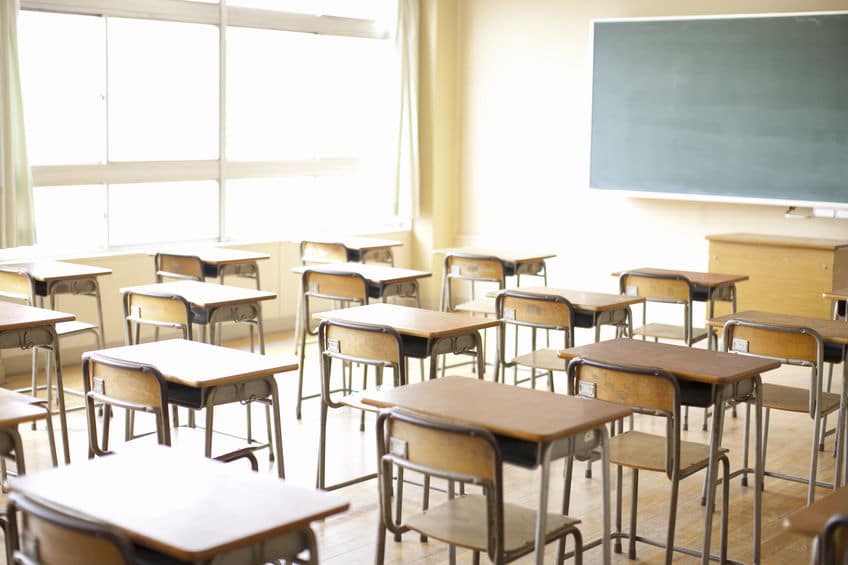What is a safe way to reopen schools? Depends on who you ask. This article cites several widely different rates of positive tests. What do you think? In NY State: 5% positivity; NYC: 3%; Arizona: 7%; Minnesota: 10 cases per 10,000 residents; and how about Iowa, who’s schools can NOT close for anything less than 15% positivity rate. What is your district doing?
By Kaleigh Rogers for https://fivethirtyeight.com/
For months, school officials across the nation have deliberated over not just whether to reopen — but how to make the decision in the first place.
In New York state, Governor Andrew Cuomo said schools could reopen if no more than 5 percent of local COVID-19 tests were coming back positive.1 But in New York City, Mayor Bill de Blasio and Schools Chancellor Richard Carranza said schools couldn’t reopen unless the positivity rate was below 3 percent.2 In Arizona, it’s 7 percent;3 in Minnesota, it’s 10 cases per 10,000 residents.4 And in Iowa, schools won’t be allowed to close for anything less than a 15 percent positivity rate.
This wide array of thresholds makes clear that, as with everything else related to COVID-19, there’s no one right answer. Scientists and school administrators agree that school-reopening guidelines require a combination of science and, well, a bit of guesswork.
One of the first decisions a jurisdiction has to make is which metric it should base its decision on in the first place. Many places — including New York City, the country’s largest school district — are using the rate of tests that come back with a positive result as a proxy for the spread of the virus in the community.
“The percent-positive rate is one of the better metrics because it helps us understand not only the case count but also whether there’s enough testing,” said Gypsyamber D’Souza, an epidemiologist at Johns Hopkins Bloomberg School of Public Health.
If you have a high positivity rate, it usually means one of two things, D’Souza explained, and neither of them is good. Either your community has a very high prevalence of COVID-19, so the odds are greater that someone coming in for a test has the disease, or your community is not testing nearly enough, so only people with severe infections are coming in for tests while those who are asymptomatic or have mild symptoms aren’t being diagnosed.
So it makes sense that positivity rate is a useful benchmark when trying to understand community spread. But how do jurisdictions decide what positivity rate is too high to allow for schools to reopen?
“The actual metrics represent expert opinion and modeling data,” said Dr. Thomas Tsai, a surgeon and health policy researcher at Harvard T.H. Chan School of Public Health.
In setting thresholds, the science — disease modeling and data from earlier in the pandemic — can help narrow the window. Many researchers agree, for example, that when the positivity rate in a community climbs higher than 10 percent, or prevalence increases higher than 25 new cases daily per 100,000, it’s a sign that testing might not be enough to curb the spread. At that point, cases could start to climb exponentially, faster than they can be caught, and schools would be a natural hotbed for an outbreak with so many people gathering in close quarters every day and then returning to the community in the evening and on weekends.
It’s a bit of a snowball effect; the higher the prevalence of disease, the harder it is to track and isolate new cases, leading to further spread. But what matters most is how a community responds once a threshold is breached, no matter what the threshold is. “It’s not so much the number, it’s what the corresponding action is,” Tsai said.
Tsai and a team of researchers at Harvard published guidelines for reopening schools in the U.S., and settled on a recommendation that community positivity rates should be below 3 percent before kids and teachers go back to school.
The level of community spread is a key metric for deciding whether to reopen since schools are, you know, schools. “If you think about schools, it’s even more of a bubble than reopening a restaurant or reopening a business,” said Dr. Tina Tan, an infectious-disease pediatrician at Northwestern Feinberg School of Medicine. “Schools really are their own microcosm where you have a lot of individuals from different areas in the community coming in.”
If a disease is prevalent in an area, it’s almost inevitable that schools would soon become breeding grounds for outbreaks.
But when it comes to establishing guidelines, science can take us only so far. What’s the difference between a 10 percent positivity rate and a 9 percent one? Enough to close schools in one scenario but open them in another? At some point, it becomes a judgment call, which is why jurisdictions’ rules vary so much.
“The test positive rate is sort of just common sense,” Tsai said. “It’s not like there’s a magic level for it, it’s directional. Three percent is better than 5 percent, which is better than 10 percent.”
That guesswork has prompted some jurisdictions to seek out more than just one metric. In Arizona, the state Department of Health Services published guidelines for reopening schools that take into account not only test positivity rate but also case prevalence and the number of hospital visits for COVID-like illnesses. For a community’s schools to reopen, there must be two consecutive weeks6 when the positivity rate is below 7 percent, the case prevalence is below 100 per 100,000 people, and hospital visits for COVID-like illness are under 10 percent.
As of publication, no county in the state met all three benchmarks.
“>7
Dr. Cara Christ, director of the Arizona Department of Health Services, said she and her team considered other states’ metrics as well as the guidelines from Harvard, the White House coronavirus task force, the World Health Organization and the state’s own local data from earlier in the spread. But while all that research helped them establish the ranges for each metric, eventually they had to just pick a number.
“We just wanted to make sure that somebody didn’t reopen at 9.5 or 9 percent and then all of a sudden they’re back at a substantial level of spread,” said Christ. “There were some discussions like, ‘Why not 8? Why not 6?’ We were trying to find something that was relatively reasonable and based on our previous data.”
Looking to other countries that have successfully reopened schools reinforces those thresholds. Both Denmark and Finland were able to reopen schools without seeing a substantial spike in cases, but first they waited until local community spread was low. Schools in Finland reopened when there was a 3 percent positivity rate nationwide. In Denmark the positivity rate was at 6 percent when primary schools reopened, and under 1 percent when high schools reopened a month later.
So while your local guidelines may differ from the next community’s, Tsai said as long as they’re based on data that’s consistent and accountable, the difference between reopening when cases are at 3 percent positivity versus 2 percent is nothing to lose sleep over.
“There is some level of arbitrariness to it,” Tsai said. “But I think that’s OK as long as you’re transparent about the rationale for it and are accountable to it.”

